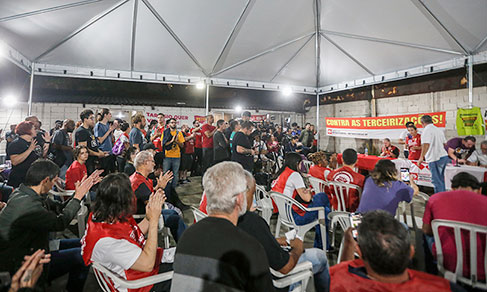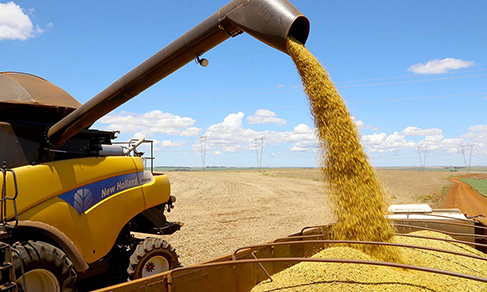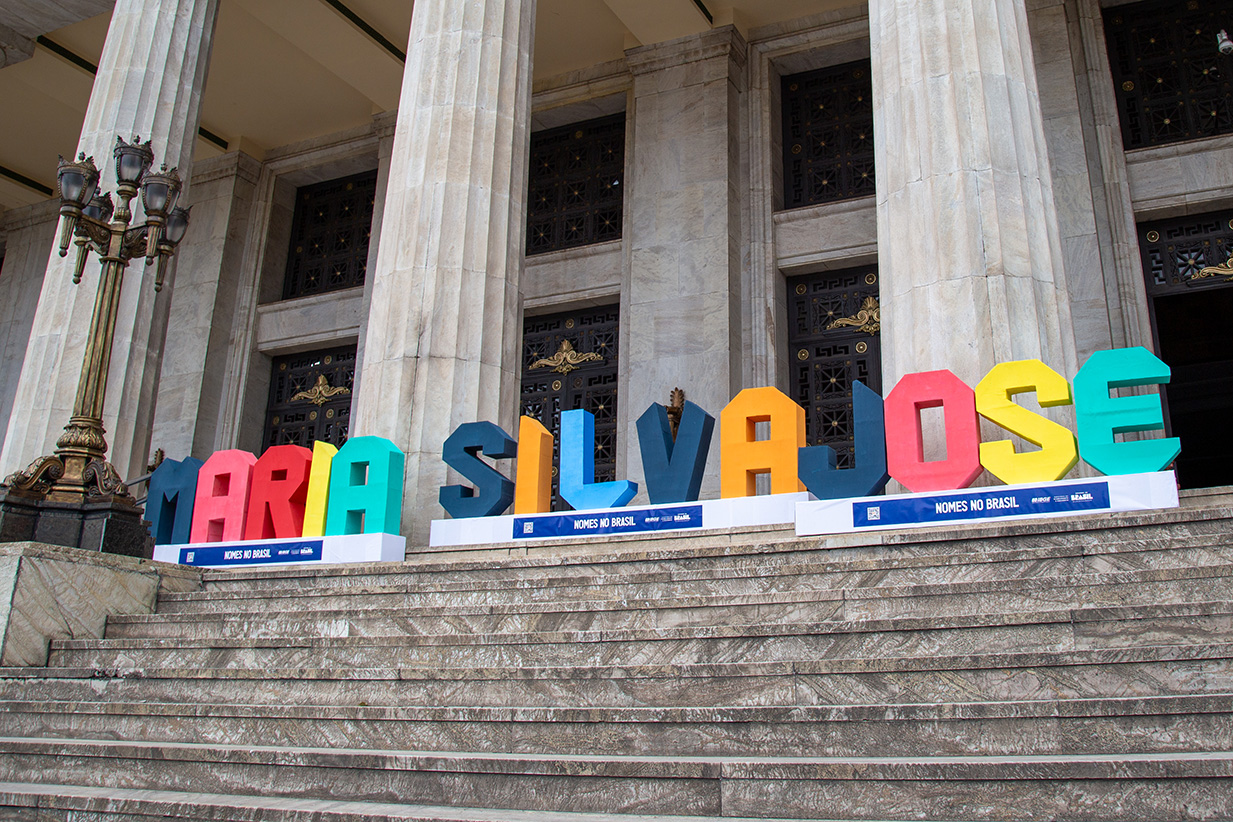Territorial Structures
IBGE releases annual update of the country's Territorial Structures
December 17, 2024 10h00 AM | Last Updated: December 17, 2024 01h31 PM
Highlights
- The following products are released today: Brazilian Territorial Areas, version 2023; Digital Municipal Mesh, version 2023; Update of Municipal Maps, version 2023; Toponymic Changes, version 2023; and the Brazilian Territorial Division, version 2023 and the Bordering Municipalities, version 2023.
- In this 2023 edition, the IBGE provides maps of 199 municipalities that had their borders updated between May 1, 2022 and July 31, 2023.
- The update in the calculation of the Territorial Area for 2023 resulted in the total value of Brazil's territorial extension of 8,510,417.822 km², revising it up to 0.051 km² more in comparison with the value published in 2022 (8,510,417.771 km²).
- The current edition of Toponymic Changes brings a single update of the name of the municipality of Minas Gerais from “Barão de Monte Alto” to “Barão do Monte Alto”.
- As a new feature, we have generated a spreadsheet of bordering municipalities, which lists the municipalities that share a geographic border with other municipalities and the respective extensions of the border strips between them.
- In relation to the previous year, the current survey, for 2023, identified the addition of 54 new municipal districts, 2 in Rondônia, 4 in Pará, 1 in Tocantins, 2 in Ceará, 3 in Pernambuco, 1 in Alagoas, 14 in Sergipe, 11 in Bahia, 12 in Minas Gerais, 3 in São Paulo and 1 in Rio Grande do Sul. In addition, there was the inclusion of 2 subdistricts in the Federal District (Arapoanga and Água Quente).

The Brazilian Institute of Geography and Statistics (IBGE) is releasing today (17) six products from the Coordination of Territorial Structures. The releases are: Brazilian Territorial Areas, version 2023; Digital Municipal Mesh, version 2023; Update of Municipal Maps, version 2023; Bordering Municipalities, version 2023; Toponymic Changes, version 2023; and Brazilian Territorial Division, version 2023.
IBGE updates geographic data of Brazilian states and municipalities
The IBGE is releasing today (17) the update of three annual Geoscience studies: Digital Municipal Grid 2023, Update of Municipal Maps and Territorial Areas of States and Municipalities. The Digital Municipal Mesh is a set of digital files with the representation of all Brazilian municipalities, states and the country.
“Updates are made based on the publication of new legislation, court decisions, reports and technical opinions prepared by the respective state bodies responsible for the political-administrative division of each state and forwarded to the IBGE. This set of information is used to generate spreadsheets for the Brazilian Territorial Division – DTB, updates for municipal toponymies, Municipal maps and new values for Territorial areas and the list of Bordering Municipalities,” explains Roberto Tavares, coordinator of Territorial Structures at the IBGE.
In this 2023 edition, the IBGE provides maps of 199 municipalities that had their borders updated between May 1, 2022 and July 31, 2023. The update in the calculation of the Territorial Area for 2023 resulted in the total value of Brazil's territorial extension of 8,510,417.822 km², indicating an review of 0.051 km² more in comparison with the value published in 2022 (8,510,417.771 km²).
The complete documentation regarding the technical, historical and legal characteristics on the use of the Digital Municipal Mesh and the values of the Territorial Areas are described in the document “Digital Municipal Mesh and Territorial Areas 2023: Technical and Legal Information for the Use of Published Data”, available on the IBGE Library.
IBGE announces Municipal Toponymic Changes
The announcement of Municipal Toponymic Changes highlights the update of the list of municipalities that had their names legally changed. The updates resonate in the Institute's geographic and statistical databases, such as the National Spatial Data Infrastructure (INDE), the Statistical Tables Database, which seeks to store and make available data from surveys conducted by the Brazilian Institute (SIDRA), among others. The current edition brings a single update of the name of the municipality in Minas Gerais from “Barão de Monte Alto” to “Barão do Monte Alto”.
IBGE updates list of municipalities, districts and municipal subdistricts in the country
The IBGE also updated the list of municipal subdivisions in the country. Compared to the previous year, the current survey, for 2023, identified the addition of 54 new municipal districts, 2 in Rondônia, 4 in Pará, 1 in Tocantins, 2 in Ceará, 3 in Pernambuco, 1 in Alagoas, 14 in Sergipe, 11 in Bahia, 12 in Minas Gerais, 3 in São Paulo and 1 in Rio Grande do Sul. In addition, there was the inclusion of 2 subdistricts in the Federal District (Arapoanga and Água Quente).
The information is from the Brazilian Territorial Division, released today (17). The tables with the information can be accessed on the IBGE website.
The Brazilian Territorial Division details the territorial structure of the country, listing the Federation Units, Intermediate and Immediate Geographic Regions, Municipalities, as well as their internal subdistricts, districts and subdistricts. The IBGE systematizes all thiese pieces of information, monitoring any changes in the Political-Administrative Division, through annual updates with the support of its State Superintendencies and respective Territorial Base Sections and the network of Agencies.
In the most recent survey, referring to 2023, the Brazilian territorial structure has maintained 5,568 municipalities since 2013. In addition to these municipalities, there is a Federal District (Brasília) and a state district in Pernambuco (Fernando de Noronha). The new municipality of Boa Esperança do Sul, in the state of Mato Grosso, will only be counted from the next version, relative to the year 2024. The intra-municipal divisions, on the other hand, undergo changes with greater dynamism. In 2022, there were 10,670 districts and 643 subdistricts. And in 2023, there were 10,724 districts and 645 subdistricts.
IBGE releases list of bordering municipalities
With the aim of presenting the relationships between bordering municipalities in line with information from the Brazilian Territorial Division, the IBGE is releasing today (17) the list of bordering municipalities. The analysis is based entirely on the 2023 Digital Municipal Mesh.
The IBGE registers events that occurred in the Brazilian Territorial Division (DTB) in order to update the description of the territory of the country to structure the operational stages of data collection, editing, analysis and geographic and statistical dissemination, associated with Household Surveys, Annual Population Estimates and Censuses and other geoscientific studies.
According to the Manager of the Brazilian Territorial Division of the IBGE's Coordination of Territorial Structures, José Henrique da Silva, “as a new feature, we have generated a spreadsheet of bordering municipalities, which lists the municipalities that share geographic borders with other municipalities and the respective extensions of the border strip between them. The purpose of this dissemination is to facilitate the view of geographic, cultural and socioeconomic interactions between neighboring municipalities, allowing analyses of conurbation, urbanization, deruralization processes, main industries, businesses and services offered by institutions and companies, for example, education, health, leisure, wastee collection, but also the experience and perception of the people who live and interact with that territory”.
“It is worth noting that this new publication is made only from the processing of the Digital Municipal Map vectors, and according to the associated documentation, such information cannot serve as a basis for any legal or administrative process”, claims Mr. Silva.




















